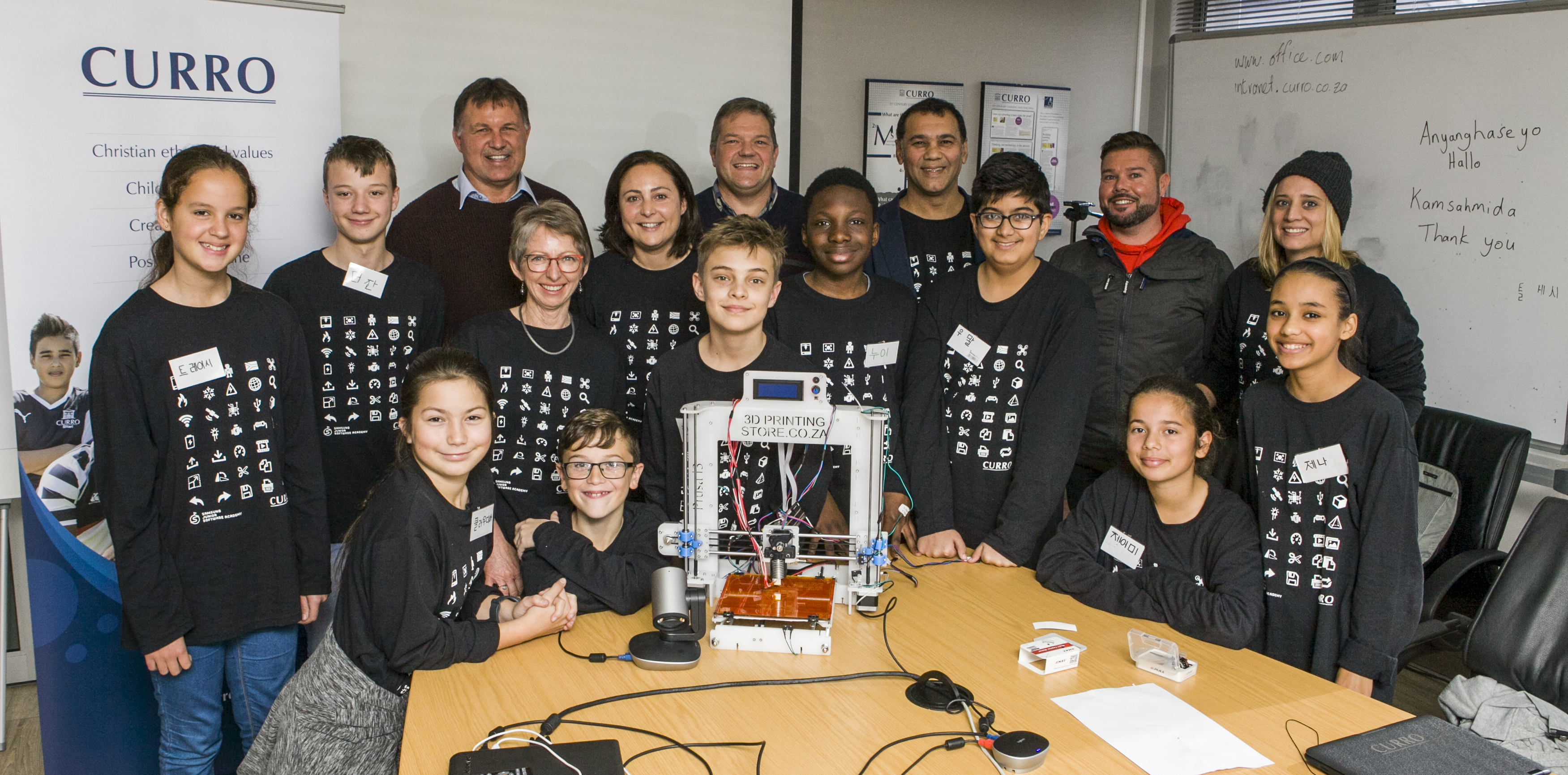Drone building project sees South African and South Korean youth collaborate
Published: Wednesday, August 16, 2017
Curro, the JSE-listed independent education provider, recently collaborated on a drone-building project alongside a group of South Korean learners.

Nine learners from various Western Cape Curro schools were recently invited to collaborate on a Samsung-sponsored science and technology project alongside a group of eight South Korean BanGok Elementary School learners. The project entailed a two-fold operation. On one end of the project, Curro learners were tasked with physically building a 3D printer and a drone, while on the other end, the project entailed collaboration between learners from the respective countries - team Curro and team Korea. With team Curro situated in Durbanville, and team Korea situated in Hongcheon district, Gangwon Province, this exercise took effect via video streaming, and required all learners to work together to solve a problem presented to them.
The project collaboration idea surfaced when Curro alumni, Richard Quantrill, who is currently working as an English Second Language educator in South Korea, approached the independent education provider with the opportunity. What made this project possible was that Quantrill, along with a team of other educators in Korea, had recently been awarded a tender for a study that Samsung was running. “Samsung, already having a software education curriculum in Korea, wanted to expand it to forecast what education might look like in the year 2030. This meant that the team was tasked with investigating the idea of creating a future education curriculum using Design Thinking, Problem Based Learning (PBL) and a combination of industry experts and educators in the same class room,” Quantrill says. Aside from the science and technology focus, another goal of the research would also look at communication and cultural practices in a teaching/learning environment.
A large selling point for Quantrill’s team during the tender process was that they were able to offer the opportunity to run a project with another school from outside Korea - which was made possible thanks to Quantrill’s South African roots.
South Africa, Meet South Korea
The project week took place between 17-24 July, and saw team Curro and team Korea getting geared for a challenge that they’d co-tackle to solve. The challenge entailed a hypothetical mountain rescue. Learners had to envision and pretend-orchestrate rescuing a person who was trapped on a mountain while discussing how the rescue plan could be executed, as well as what obstacles they may face in the situation. Once both teams had brainstormed their options, they were then able to exchange ideas and critique them constructively.
The collaboration between team Curro and team Korea took place during specific hours over the six days in order to accommodate the seven hour time difference. While observing the interactions between the two teams, Quantrill explained that “the goal of this collaboration was to study how language creates difficulties in communication, while looking at how learners naturally try to solve this communication challenge.” To assist with the language barrier, the children were all given icon t-shirts to wear which allowed them to point to certain pictures in order to communicate graphically when words failed.
Building ‘robots’
Once the collaboration session drew to a close between team Curro and team Korea, the Curro learners began the second phase of the project which involved ‘robot’ building. Despite the project having been largely a pretend scenario, the equipment supplied was very real in terms of hardware. Using the equipment, team Curro were tasked with physically building a drone and a 3D printer that could ultimately facilitate a mountain rescue scenario.
The purpose of the drone is an obvious one in a mountain rescue scene, as it can be used as a vehicle to carry supplies to the stranded. However, the function of the 3D printer was a behind-the-scenes accomplice, as it was the tool that 3D prints the required hook to be attached to the drone in order to carry the necessary rescue items. Throughout the building sessions, Quantrill played an active role in advising, guiding and educating the learners through the process via video stream.
Curro’s Subject Manager for Robotics, Dalene Gelderblom, says “throughout their 6 day challenge, team Curro felt tried and tested, but inevitably walked away with a valuable new skill set. They learned how to build a drone and a 3D printer from scratch; how to use SketchUp software – a design programme; Arduino programming and they were able to further develop their 21st Century Skills that they’ve gained in the classroom. The learners even learned how to write in Korean!” Gelderblom further noted, “it has been an incredible experience for the learners and they have certainly gained so much from it. How many other children get the chance to build a drone and 3D printer at school?”
